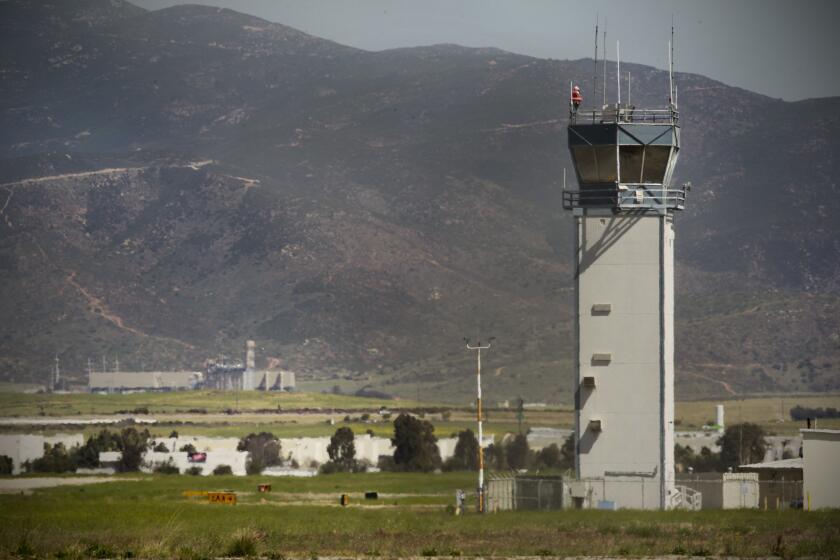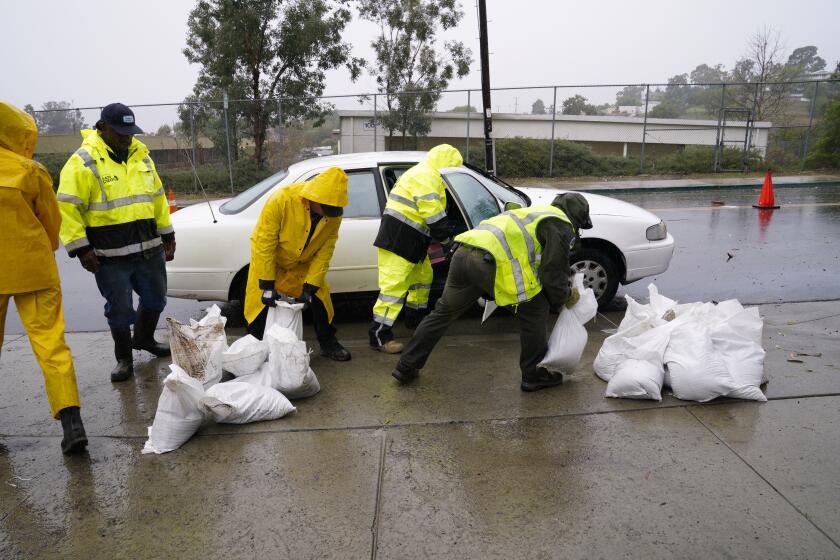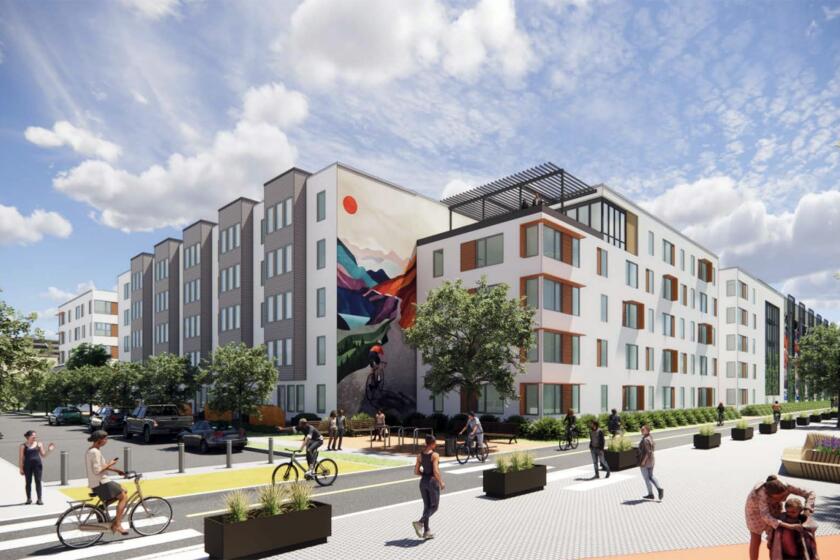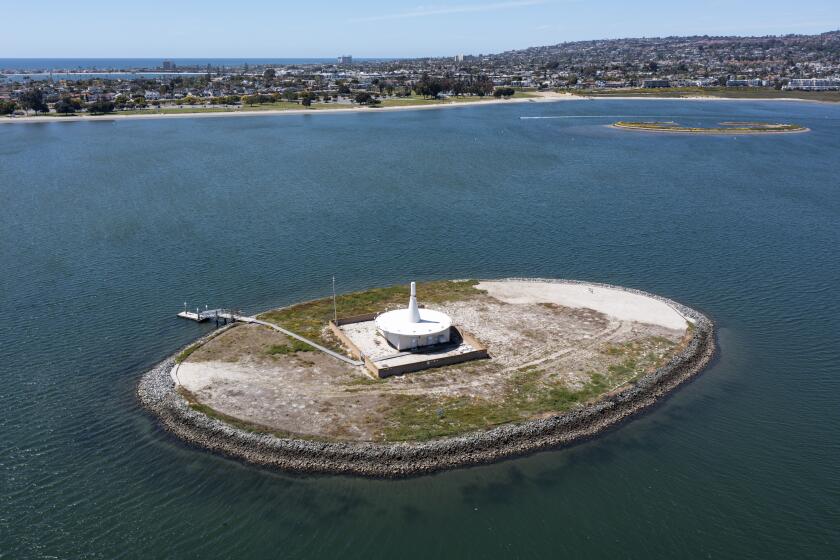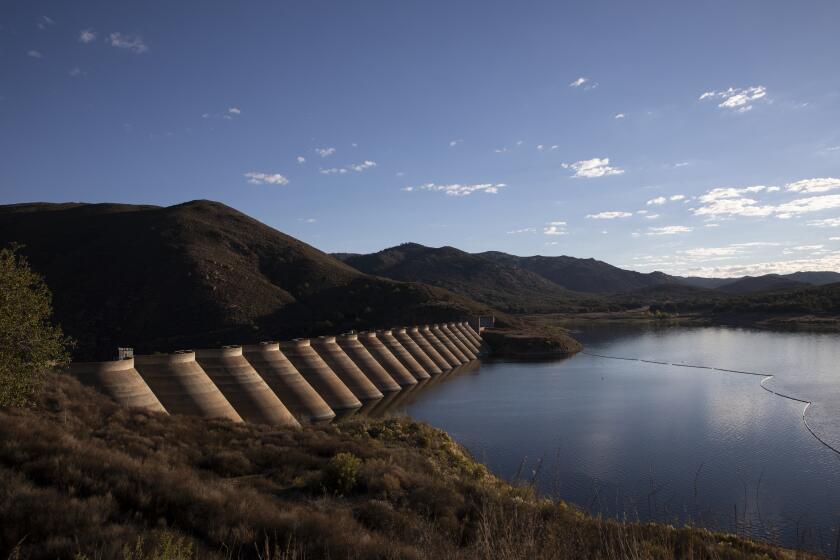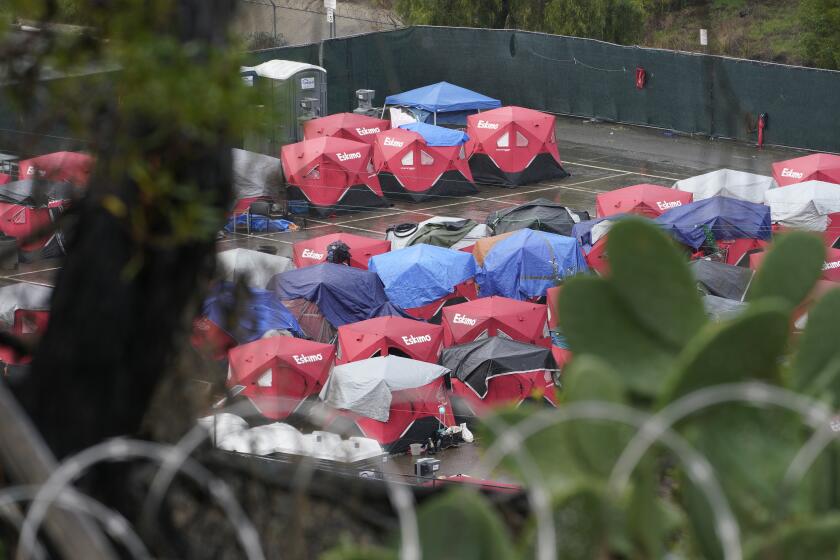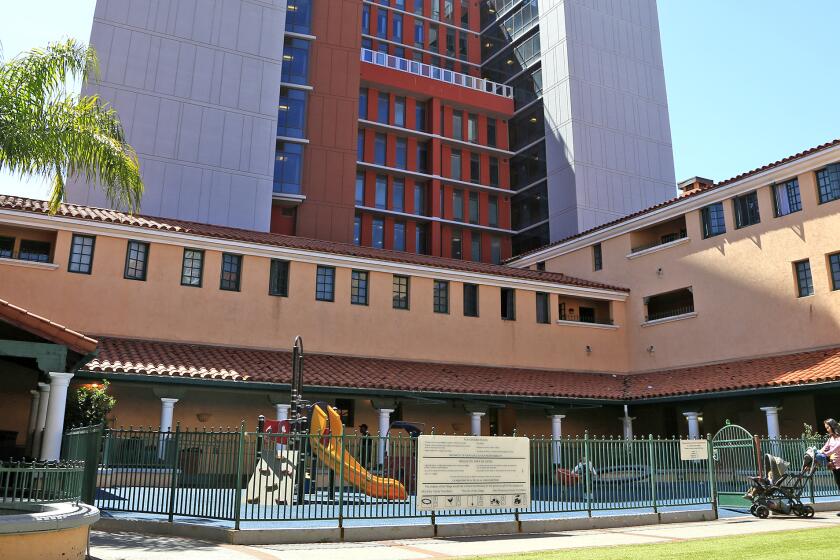Building boom is transforming Otay Mesa into economic engine
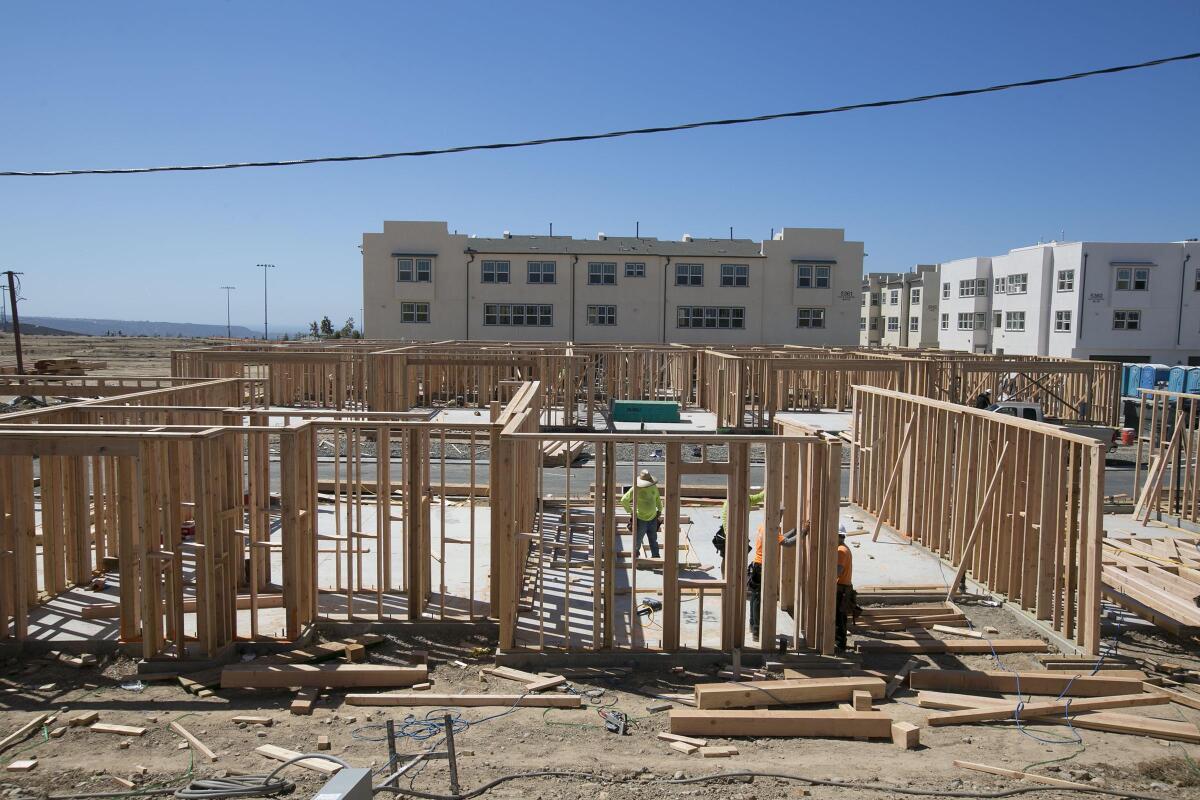
Major development, freeways, border upgrades coming to formerly blank slate of prime land
Otay Mesa is quickly being transformed into a thriving community with dozens of new industrial projects, vast housing subdivisions, new freeways, a new border crossing and dramatic renovations at Brown Field airport.
Long touted as San Diego’s next major employment center, 12,000-acre Otay Mesa has for decades been a mostly blank slate of prime industrial land sandwiched between Chula Vista and the Mexican border.
But that is changing rapidly thanks to a strong economy, increasing scarcity of industrial land elsewhere, completion of Interstate 905 and a second border crossing that will feed into another new freeway— state Route 11.
A developer recently got approval for dramatic renovations at Brown Field that will include three dozen new hangars, a large hotel and 1.5 million square feet of retail and industrial buildings.
“That’s going be a game changer,” said Councilwoman Vivian Moreno, whose district includes Otay. “You’re talking about a hotel, upgraded hangar space and commercial development that will create more than 4,000 jobs.”
Efforts to make Otay Mesa’s Brown Field an economic catalyst took a step forward recently when San Diego approved plans for three dozen new hangars, two hotels and 1.5 million square feet of retail and industrial buildings.
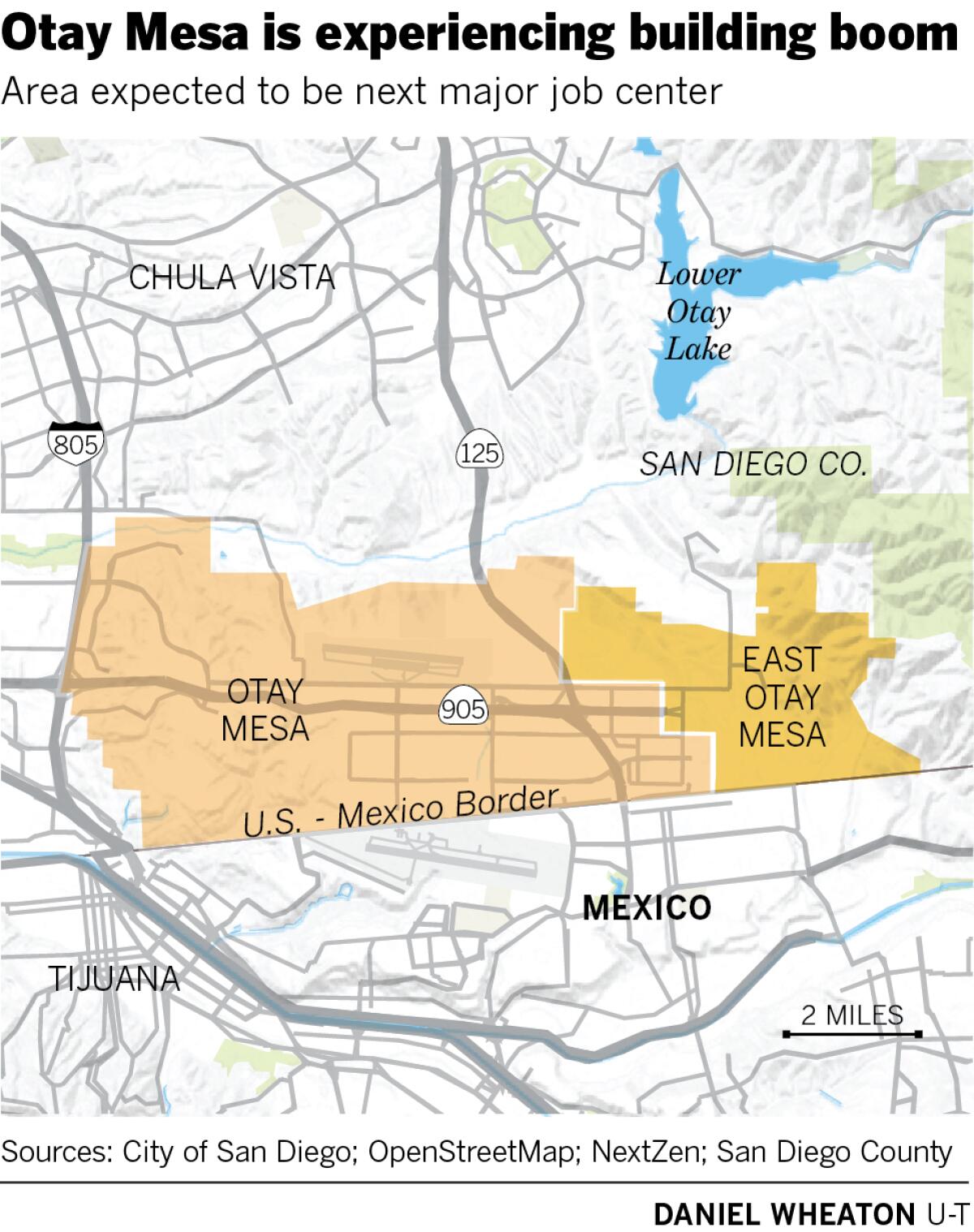
Another boost has come from the Cross Border Xpress, a bridge from Otay Mesa to Tijuana International Airport used by more than 2.2 million people last year, its third year of operation.
“They never thought they’d have the users and ridership that they do — it’s just been unbelievable,” said Rob Hixson, chairman of the Otay Mesa Planning Group. “We have a whole bunch of people who wouldn’t normally come here getting familiar with Otay.”
Those upgrades and infrastructure improvements have spurred housing developers, Fortune 500 companies and other firms to begin flocking to Otay Mesa, where land costs and rents are relatively cheap.
“It has the lowest rent costs in San Diego and great availability of labor, with South County blue collar workers and Tijuana workers,” said Kaitlin Arduino, a partner of Murphy Development Company, a leading Otay developer.
Located partly in the city of San Diego and partly on county land, Otay Mesa is already home to major industrial facilities for Bose, Panasonic, Sharp, General Dynamics, Honeywell, Tyson and Johnson & Johnson.
But many more are on the way, and some of the existing companies are planning expansions within Otay.
An industrial developer from Atlanta is building a five-story warehouse with nearly 3 million square feet of space that the developer says will house a new distribution center for Amazon.
Hixson said he has been told the facility will have 1,500 employees and that ground will be broken in December so that Amazon can begin operations in July 2020.
Another example is Copart, an auto auction company that already has an 80-acre storage facility in Otay. The company recently bought 50 additional acres next to Brown Field for an expansion, Hixson said.
Meanwhile, developer Ed Roski is planning separate industrial buildings along I-905 on four parcels of roughly 15 acres each, Hixson said.
“They are all coming to Otay because you can get a really great industrial building with great freeway access,” said Hixson, calling the recent flurry of activity a long time coming. “Otay is starting to look totally different. It’s amazing.”
Land is so plentiful in Otay that it’s often the only place certain projects can be built. An example is a 40-acre training track and skills course for local law enforcement and other emergency personnel to practice driving their vehicles.
Facility will replace makeshift course in Mission Valley used by county, city, colleges
County officials are preparing to build the $30 million facility within the vast Otay Crossings development. The city and the San Diego Community College District will contribute $5 million each to share the facility.
Because of its mostly industrial zoning, Otay Mesa is home to nine of the 40 marijuana production facilities San Diego has approved this year to create a local supply chain for the city’s dispensaries.
Murphy Development, which began building projects in Otay more than 30 years ago, is also building and planning several projects, including The Campus at San Diego Business Park, Brown Field Technology Park and Siempre Viva Business Park.
Arduino, whose father Mike Murphy launched the company, said it’s gratifying to see so much development coming to Otay so the community can fulfill its potential.
She said part of the credit should go to city and community leaders for updating the area’s growth blueprint, called a “community plan,” five years ago.
“I think that gave people a road map for going forward, letting people know what they can and can’t do on their property,” she said.
Another key city move was making Otay Mesa the state’s first enhanced infrastructure financing district, an effort to partly revive redevelopment agencies in California.
Five years after cities across California lost redevelopment agencies as a crucial tool for economic growth, San Diego is taking advantage of the state’s partial revival of the concept.
Some of the property taxes generated by new development in Otay no longer go to Sacramento or to the city’s general fund; it stays in Otay to pay for roads, fire stations, parks, libraries and other amenities.
Moreno said estimates of long-term development in Otay show that the district will generate $970 million over its 45-year life, which will cover the lion’s share of the estimated $1.1 billion in infrastructure projects Otay is expected to need.
That money will be on top of federal funds pouring into Otay. The federal money includes more than $110 million to build state Route 11 and connect it to a new border crossing being called “Otay 2,” and $120 million to retrofit and upgrade the community’s existing border crossing.
In addition, the city plans to finance a series of new onramps and offramps to relieve traffic congestion near the existing border crossing.
Some critics say Otay Mesa is being developed with an outdated model that doesn’t include mass transit and relies too much on vehicles, which produce a large share of the greenhouse gases spurring climate change.
“There’s some legitimate questions about whether they’re building in a way that makes sense,” said Nicole Capretz, principal author of the city’s climate action plan and leader of the nonprofit Climate Action Campaign.
Moreno noted that the Metropolitan Transit System runs express buses from Otay to downtown San Diego and recently launched a new route from Otay’s industrial areas to the Iris Avenue Trolley station on Otay’s western edge.
Moreno said city leaders also plan to lobby for more bus routes as development continues in the community.
She also predicted that new industrial development in Otay may actually reduce climate change by bringing jobs closer to South County workers who commute in droves to job centers in downtown, Mission Valley and Sorrento Valley.
“Most of the traffic now comes from the south and heads up north,” said Moreno, adding that people working closer to home has another benefit. “If we could cut commutes in half, people will have better lives.”
Cindy Gomper-Graves, chief executive of the South County Economic Development Council, said Otay will help strike a better balance between jobs and housing in South County.
“It’s really needed when you look at the traffic that is leaving South County — we need this employment hub,” she said. “When you combine Otay Mesa and east Otay Mesa, it will be one of San Diego’s largest job centers.”
In addition, ColRich and Pardee Homes are planning thousands of new units in western Otay to house many of the workers at the new industrial buildings.
Hixson, the planning group leader, said the projects will include a variety of housing, such as townhomes and smaller units, not just sprawling single-family homes.
“It’s going to be great housing for people who work in Otay Mesa, and it’s going to be a lower price point,” he said.
Gomper-Graves said one reason development is proceeding so rapidly is limited community opposition, compared to many San Diego neighborhoods where change is viewed more skeptically.
“There might be a hiccup here or there about an aspect of a development, but usually it all gets worked out,” she said. “People are welcoming the jobs. People are welcoming the opportunity to have their businesses located near where they live.”
Top headlines by email, weekday mornings
Get top headlines from the Union-Tribune in your inbox weekday mornings, including top news, local, sports, business, entertainment and opinion.
You may occasionally receive promotional content from the San Diego Union-Tribune.
